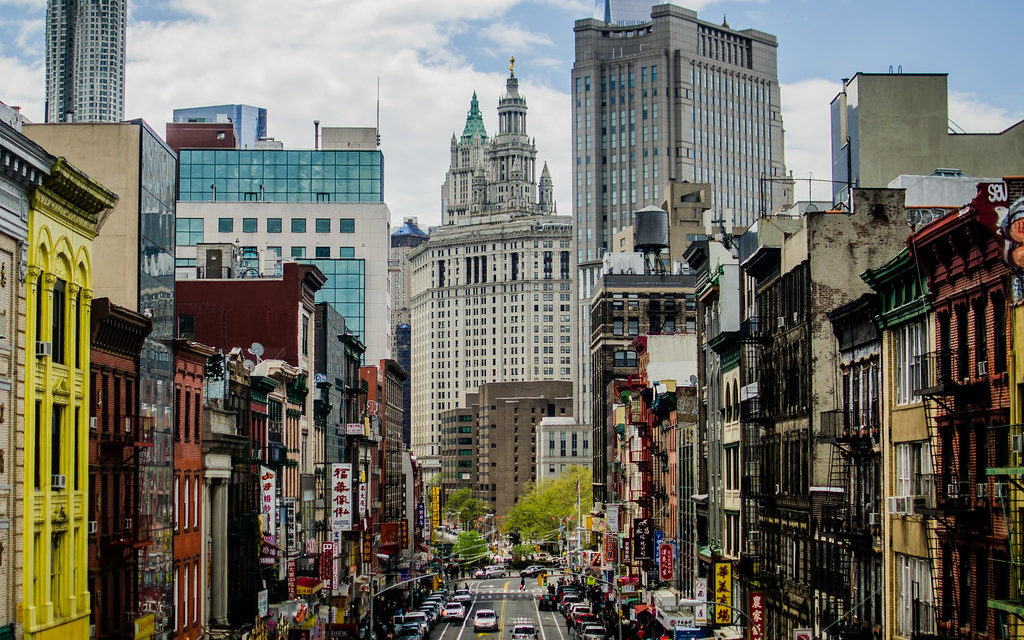America’s built environment is dominated by pavement. Boasting over a billion parking spaces, not including any home parking, the country has four times as many spaces as cars. In New York City alone, the amount of curbside parking is equivalent to the area covered by 10 Central Parks, and nearly double that when including off-street parking. After decades of aggressively expanding car-oriented public spaces and housing policy, American car culture in many areas consumes nearly all of the space between buildings.
While it has invested in the general convenience of car travel, the government has increasingly neglected the pedestrian walkways and recreational areas that serve people. Local-level lawmakers have embraced a culture of car dependency by zoning all but the most dense urban areas for vast parking lots and highways rather than well-connected walking space. Pedestrian deaths have risen 42% over the last decade, and bicyclist deaths are rising even more quickly. In the rush to sprawl away America’s problems, policymakers have only encouraged congestion across a more disconnected landscape. Even urban centers heavily favor cars and the roadway at the expense of walkers, sidewalks, bikers and bike lanes. To strike a better balance between driving and living, cities and towns must commit themselves to human-oriented planning and the urban design to support it.
How people engage with their surroundings begins with where they live. Housing policy determines much of the character, density, and accessibility of a neighborhood, and these in turn determine how people will venture into the world beyond their doorsteps — namely, on foot or behind the wheel. “There’s this whole ecosystem of things that are car-dependent,” Rebecca Macklis told the HPR. Macklis is the senior urban design manager at the New York City Public Design Commission, New York City’s design review agency focused on the public realm, with jurisdiction over architecture, landscape architecture, and art on city-owned property. When homes interface primarily with car infrastructure, people are cut off from interacting directly with public spaces, businesses, and each other. According to Macklis, more than simply the roadbed of streets must change for them to become more walkable. Beyond sidewalks and crosswalks, the entire urban fabric has to tailor itself toward creating proximity and usable public space.
These kinds of changes stare down the heart of American car culture, but many people are already beginning to demonstrate that they care about making more than four feet of room for their own two feet in the concrete jungle. Consumers have made their preferences clear, as suburban malls shutter at alarming rates while walkable areas have boomed — despite more than a few familiar complaints about inadequate parking along the way. The Pensacola Parking Syndrome, named after Pensacola, Florida, refers to a phenomenon where so many walkable historic buildings are replaced with parking lots that the downtown area becomes undesirable to visit and the parking lots sit empty.

We relegate vast swaths of our public space to cars not by virtue of the free market but rather by that of local policies and zoning codes. Burdensome minimum parking requirements and other zoning ordinances have overloaded land-strapped cities with enormous quantities of half-empty parking lots. Zoning codes almost always mandate a certain ratio of parking to be developed alongside each new building. In many areas, the mandated level of parking creates an oversupply that leaves expensive land essentially unused while also pushing buildings farther apart, reducing walkability, and encouraging more car usage. In Chicago and Boston, studies found a third of parking spots at apartment building lots and garages are sitting empty each night, each costing residents many thousands of dollars.
Some cities are responding to advocacy against parking requirements by eliminating them, as well as installing wider sidewalks, better crosswalks, and more bike lanes. Allowing denser housing and mixed-use development, especially near public transit hubs, is another effective way to enhance walkability and reduce congestion. This work is urgent because car-centric policies, especially parking and density restrictions, have contributed to a nationwide housing crisis by depressing new construction and decreasing land available for housing — ultimately driving up prices.
The trend of carving out pedestrian space from the road has rapidly picked up during the coronavirus pandemic. Many cities have closed streets and curbside parking for socially-distanced recreation and outdoor restaurant seating. Macklis is optimistic about how these new developments will impact the scope of what is possible in the future. “I think people will be more open, and I think the flexibility and revisioning that comes out of this necessity will definitely, in an exciting way, be kind of a silver lining and open up more flexible conversations for how to balance multimodal transportation and looking at the amount of space in our public realm that we’re allotting to each type of thing,” she said. In Seattle, nearly 20 miles of streets have now been permanently closed, with more on the way.
Urban planners are already starting to embrace the need to redesign America for the way people want to live in it. Better pedestrian infrastructure and less sprawl makes a neighborhood more connected, less congested, and more environmentally sustainable. But this fight is bigger than efficiency; it is about the kind of spaces in which we want to exist. Above all, it is up to local governments to plan walkable neighborhoods and turn the tide against decades of ineffective planning. Americans can continue relegating themselves to the four-foot margins of a car-centric world, or they can build spaces for humans to engage with one another and the natural world.
Image Credit: “Chinatown NYC” by Madhu Nair is licensed under CC by 2.0.



